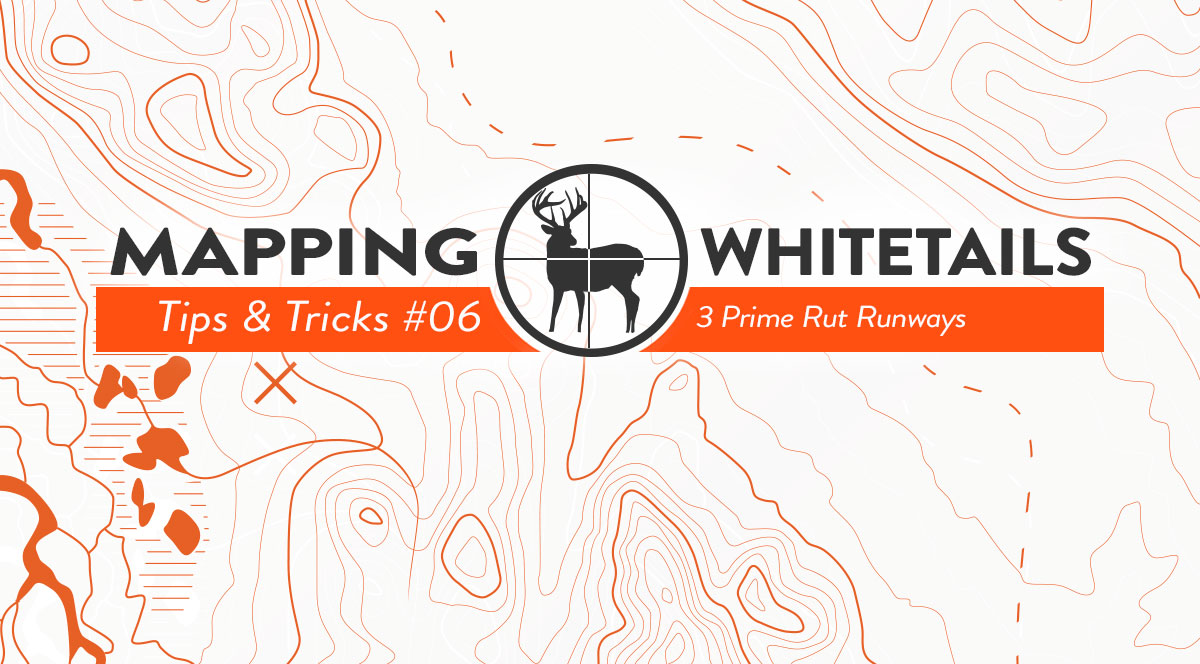In Mapping Whitetails #6 we are going to build off the 3 Must Hunt Funnels featured previously and cover 3 additional stand sites that you should target during the rut to catch a booner off guard.
The Thicket
 The red areas indicate thickets. The one on the left is a 13 year old tree plantation with altering rows of oak, white pines, and spruce trees. The large area to the right is basically just a nasty tangled mess of old overgrown pasture that leads into a swamp to the north. Notice the ugliness in terms of sporadic trees and brush mixed between pockets of open floor. This is what you want to look for when trying to identify a thicket. The yellow shows a uniform stand of open hardwoods. Notice no pockets in the canopy to allow sunlight to the forest floor.
The red areas indicate thickets. The one on the left is a 13 year old tree plantation with altering rows of oak, white pines, and spruce trees. The large area to the right is basically just a nasty tangled mess of old overgrown pasture that leads into a swamp to the north. Notice the ugliness in terms of sporadic trees and brush mixed between pockets of open floor. This is what you want to look for when trying to identify a thicket. The yellow shows a uniform stand of open hardwoods. Notice no pockets in the canopy to allow sunlight to the forest floor.
No need for an explanation of what that is, but here’s how to look for and find a super thick and brushy area to hunt using an aerial photograph. The main thing I key in on when searching for these thick nasty zones is to find areas that look like trees are sporadically placed across the landscape with pockets of open grass in between. Perhaps it is easier to explain with the aid of a photograph. Notice in the picture below how the outlined area just kind of looks ugly in nature – there’s no uniform canopy like you see in the hardwood stands and clumps of brushy trees are scattered throughout.
Another prime thicket area to key in on are tree plantations. Often these trees are planted neatly in rows. The best tree lots to hunt in my opinion are the ones that include spruce trees and other evergreens with hardwoods planted every other row. The evergreens provide much more concealment at a deer’s level (0 – 6 ft.). Tree plantations that are 5-20 years old typically produce the best cover. Expect plenty of bucks to be cruising these thickets during the all stages of the rut, as this is where the does like to hide from those sex crazed bucks.
Ridgeline Runways
 Drawing lines along ridgelines helps paint a clear picture of where you should place a stand. If you have the right wind, the intersection of these two ridgelines would be prime. If not, anywhere along one of these ridgelines would be a good spot, especially if you can locate a saddle.
Drawing lines along ridgelines helps paint a clear picture of where you should place a stand. If you have the right wind, the intersection of these two ridgelines would be prime. If not, anywhere along one of these ridgelines would be a good spot, especially if you can locate a saddle.
Although aerial imagery is getting better in terms of displaying a 3D landscape, a topo map will be the best tool to identify ridgeline runways. Bucks prefer the easiest travel routes when they are out cruising for does, thus, they prefer to run the flat tops rather than traversing up and down hilly country. Also, the end of ridges or ridge point is where most deer will travel up and down since it is likely the most gradual slope connecting the brushy ravines to the ridgetops. Another main advantage of hunting ridgetops is the wind is much more constant. Once you start dropping into gullies and ravines the winds often swirl, therefore giving the advantage to a mature buck. Hardwood ridgelines spanning between two bedding areas are my absolute favorite stand sites during the rut!
Bottomland Booners
 River or creek bottoms are excellent rut stands because they are natural travel corridors and also typically have a thin buffer of cover running along them.
River or creek bottoms are excellent rut stands because they are natural travel corridors and also typically have a thin buffer of cover running along them.
If you’re lucky enough have a piece of hunting property that borders a river, creek, or stream, you already know how productive these riparian corridors can be during the rut. The buffer strip along flowing water systems are absolute must hunt areas during the rut! In flat country like what you find in the prairie states, these bottoms are jam packed with whitetails. Often it’s the only band of cover for miles and it’s easy cruising for the bucks. These little honey holes are a lot easier to find on a map than they are to gain hunting permission.
If you can find a spot to hunt in one of the above areas I can almost guarantee you’ll experience some crazy whitetail action during this year’s rut.







